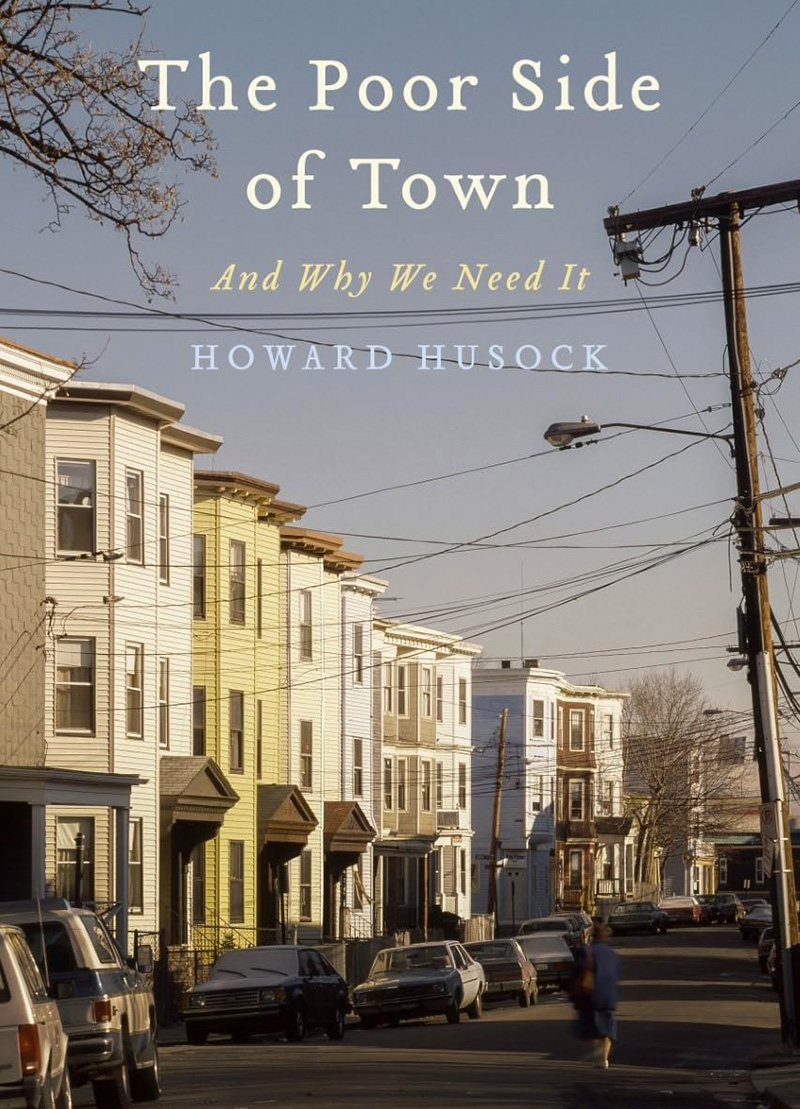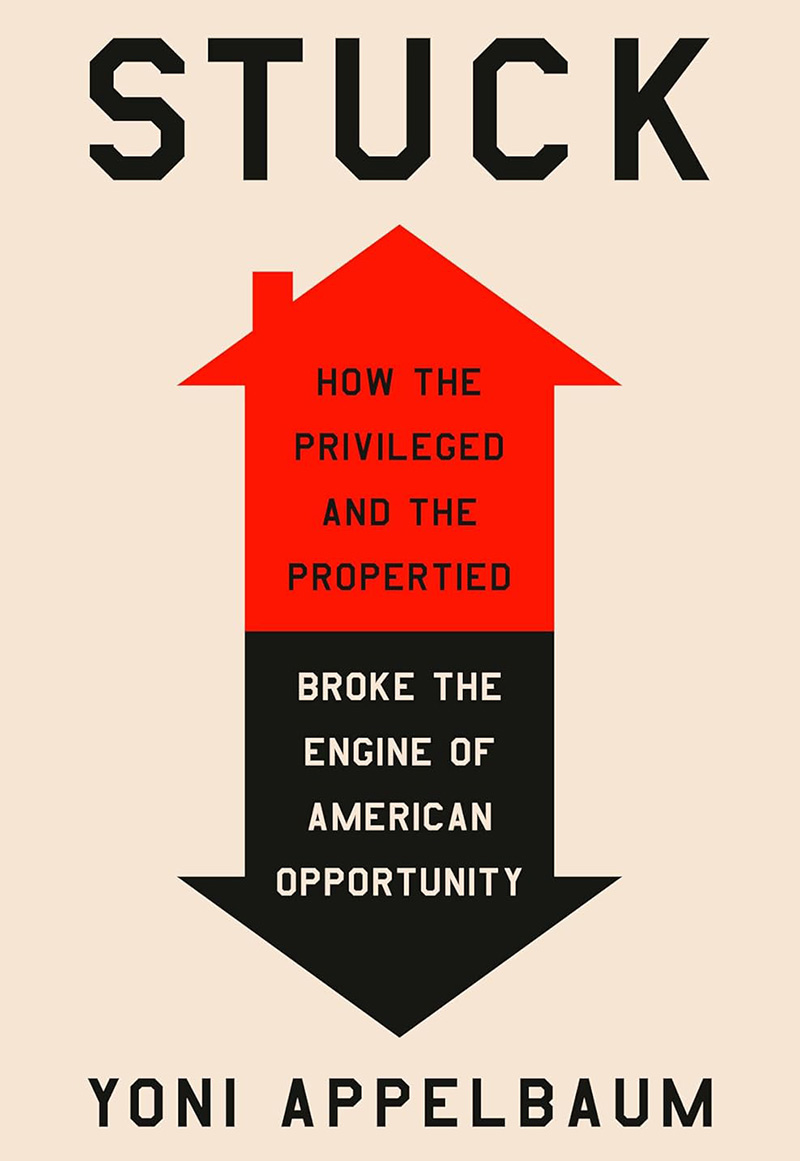Ireland’s housing crisis appears intractable. It is causing large-scale homelessness, trapping vast numbers of people in the rental market, and hindering economic growth as well.
In political terms though, it also appears insignificant; in spite of the failure of FFG to solve it, they were handily returned to office, and by the time of the next general election, Fine Gael will have been in power continuously for almost two decades.
What gives?
International experience in this area is worth examining, including in the United States, where two recent books by prominent policy experts examine housing policy in detail.
Yoni Appelbaum’s ‘Stuck: How the Privileged and the Propertied Broke the Engine of American Opportunity’ came out in February, whereas Howard Husock’s ‘The Poor Side of Town: And Why We Need It’ was released in 2021.
Appelbaum is a journalist with The Atlantic, and Howard Husock is a scholar at the right-leaning American Enterprise Institute.
Applebaum writes from the left, and Husock from the right, but their books are noticeably similar, in that they each argue that government policies have made it harder for people on low incomes to access affordable housing.
From an Irish perspective, this is particularly interesting given that a similar process has occurred here.
Husock begins his account by describing how he served in local government in a small community outside Boston in the 1980s.
The population of the town was very diverse in background, but it had previously included a much larger number of low-income residents before a decision had been taken to demolish what had been characterised as ‘slum housing.’
This was not a one-off incident, but part of a pattern of activity which saw many vibrant communities of poorer people being uprooted in the 20th century in response to sensationalist media coverage about housing conditions.
A key villain (or perhaps tragic hero) in this narrative is the campaigning photojournalist Jacob Riis, whose 1890 book ‘How the Other Half Lives’ focused on the tenements of New York City, where many impoverished immigrants began their lives on American soil.
Riis painted a grim picture of disease and disorder within the crowded buildings, but Husock points out that he made little or no effort to ask actual residents what they thought, or to think of what would happen if the tenements were ever cleared entirely.
Subsequent government investigations suggested that the work of Riis had exaggerated the problems, and legislation soon followed which raised building standards while also providing services such as public baths.
Still, the demand for action grew. In the second half of the 20th century, campaigners following in the footsteps of Riis gradually adopted a more hardline stance in pursuing widespread slum clearance.
Inner-city tenements were torn down and new public housing projects were created across the United States, in a manner which was somewhat similar to what occurred in Dublin in the 1960s where inner-city residents were moved to new areas like Ballymun.
“The poor side of town had been replaced with something far worse: a place where a distant and dysfunctional management had supplanted dispersed ownership; where streets lined with stores and churches were replaced by large, windswept campuses that would become spaces residents feared to cross; where walk-up buildings were replaced with towers in which elevators failed and stairways became havens for criminals,” Husock writes.
Appelbaum’s book is longer than Husock’s and broader in focus, as he describes how the lack of housing options in today’s America has changed the country socially and politically.
As a nation, America was incredibly mobile in the past; in the late 19th century, around one in three Americans changed their address in a given year.
This has now fallen to a figure of one in twelve. It is no longer an option for people to leave their homeplaces in search of greater economic opportunities as the most prosperous American cities are often badly lacking in accommodation.
Things which were possible before are not possible now, like the dramatic increase in California’s population from 3.4 million in 1920 to 20 million in 1970.
Appelbaum links this declining physical mobility with the declining economic mobility, as well as the decline of what had been America’s vibrant associational life: where newcomers to an area would quickly become part of its social fabric by participating in various community groups such as churches, civic organisations and charitable groups.
As well as the physical removal of what had been popular housing options for the poor, both authors make clear that zoning regulations played a key role in this process, as it has been made progressively harder to build high-density housing units – which happened to often be the only types of housing which were affordable to those outside of high income brackets.
High-rise apartments – seen as a modern equivalent of the original tenements – were explicitly or implicitly targeted by people who believed that people should not live in such conditions.
Appelbaum in particular describes how zoning requirements have at times been used to exclude people from particular ethnic backgrounds, as when a Californian town introduced a law restricting the location of the laundry businesses which happened to be run by Chinese immigrants.
Environmental restrictions have also played a part. When the prominent activist Ralph Nader released an influential report attacking urban sprawl in California, his success made it easier for liberal politicians to block new housing developments more generally. For the people already resident in California, this may have made life better, but it put an end to the era where other Americans flocked there in search of the brightest part of the American dream.
Interestingly, as Husock describes, a different approach has been taken by the Republican-controlled state authorities of Texas when they were faced with the development of ramshackle settlements (‘colonias’) along the Texas-Mexico border.
Rather than clearing the shanty towns on the grounds that they lacked the necessary infrastructure, Texas invested significant resources in building roads, installing water connections and improving sanitation. Incremental development was preferred to utopian transformation.
Little wonder that so many Hispanics have recently defied the expectations of America’s liberal elite in switching to the Republican Party, at a time when the growing population of Texas and other Red States is tilting the political balance further towards the GOP.
As a left-leaning American political commentator, Appelbaum’s verdict on the policies pursued in big Blue cities and big Blue states is scathing.
“Again and again, Americans have investigated the housing conditions of the poor, declared them unacceptable, and responded with laws banning certain classes of structure and tightening building standards – as if the problem were the buildings and not the poverty. We have slowly purged from our landscape most forms of genuinely affordable housing. Far from solving poverty, we have exacerbated it, by making it more difficult to obtain affordable housing in the places that offer real economic opportunity, physical security and social connection,” he writes.
What lessons do these books hold for Ireland, with our traditional aversion to apartment living and our differing planning system?
Ireland also suffers from a very real structural problem relating to mobility. Many of the best jobs are in the Greater Dublin Area, where the housing crisis is at its worst.
Dublin also happens to be the most politically and socially liberal region of the country, which brings with it a cognitive dissonance which Appelbaum detects in his own community.
Early on in his book, he describes seeing two lawn signs side by side near his home in Cambridge, Massachusetts, home to Harvard and many of America’s most distinguished liberal intellectuals.
“One proclaims, NO MATTER WHERE YOU ARE FROM, WE’RE GLAD YOU’RE OUR NEIGHBOR, in Spanish, English and Arabic. Beside it, another reads, SAY NO, urging residents to oppose the construction of an apartment building that would house the new neighbours the other sign welcomes. Ironic, yes. But also instructive.”
A similar dynamic is at play in Dublin, where high-profile progressive politicians have essentially won elections by vocally opposing housing projects in their constituencies.
The failure of a political force to emerge which successfully challenges the status quo is surprising until one realises that supporting new housing is in the general interest of all, while opposing new housing is often in the special interest of those who would have to live near it.
Ireland has also made similar mistakes to America in responding too harshly to criticisms of particular types of housing, with the banning of bedsits in 2013 being the most obvious example of this.
Environmental and other building regulations introduced on the grounds of protecting the public have made it harder and more expensive to build the types of homes that we need, with apartment construction being hardest hit.
There are grounds for optimism. The government is actively considering lowering design standards on new apartments in order to make them cheaper to build, therefore enticing more developers and investors to get involved in the sector.
One practical example is the possibility that the requirement for balconies will be removed, which should make it easier to fit more apartments into each apartment complex.
The opposition will surely howl. Professional campaigners – who often have suitable housing in attractive areas – will lament any reduction in standards.
But for an inestimable number of people, the enhanced prospect of having affordable accommodation available to them will make their world a brighter place.

